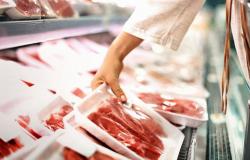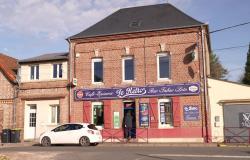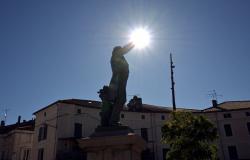
Michelin was the first industrial employer – and the 5th private employer – in Vannes. How do you react to the upcoming closure of the factory?
It's a dark day for Vannes, an earthquake for the region. For weeks, the outcome had been becoming clearer, but it's a real shock, it's hard to take. Michelin was the pride of the city. My thoughts go first to the employees, who are devastated. They were very attached to this production tool. I really call on Michelin to have very individualized monitoring of its employees.
Your emotion is evident. Was Michelin part of the identity of Vannes?
The development of Vannes was closely linked to the arrival of Michelin in the 1960s. The Noyalo water plant was built for Michelin's water supply. It made it possible to secure the supply of drinking water for the city and also for the Rhuys peninsula. The Ménimur district, with more than 1,100 housing units, was built for the arrival of Michelin employees. In Conleau, rue du Maréchal-Juin, the City had built around fifteen pavilions for Michelin employees, the use of which it regained not three years ago. I remind you that Michelin had more than 1,500 employees on the site at the end of the 1990s.
Vannes is poorly industrialized. The agglomeration had 8.9% industrial jobs before the announcement of Michelin's departure. How are you going to bring in new businesses?
The site is owned by Michelin, and the first to work on this file is Claudia Netodea, the director, whose self-sacrifice I salute to maintain her employment. Tomorrow we are working on the arrival of new industrialists on the site. I can't say more at the moment, but we have serious contacts. I support companies that would like to arrive in this territory, by effectively showing them how the communities are there to facilitate their installation, that of their employees, that of the employees' children. As we did for the arrival of APF Entreprises 56 on the Michelin site with around a hundred employees. I was personally involved in this matter. And for the arrival of Wisamo, for which the City changed its PLU rules to be able to put its large 45 meter sails out.
Michelin aims to create “at least as many jobs as those eliminated”. What type of activity are you hoping for?
You have to pay attention to two things: already, the activity will, roughly speaking, be maintained for a year on this site. And then, we must not confuse speed and precipitation. We should not quickly welcome companies which, by the nature of their activity, would prevent other activities from occurring. Personally, I do not want us to welcome logistics, for example. Because we are in a very tertiary, very touristy territory and we must also be able to provide employment to everyone. I believe that we must turn resolutely towards the industries of tomorrow.
What are the advantages of the factory site?
With 68,000 m2 of covered buildings, the size of the Michelin site is a real asset for hosting heavy industries. When I say heavy, it's in terms of space required. And then there is this railway line, which was quite unique in France, between the factory and the Vannes station, carried by the town hall and by the urban area. It has not been used for ten years. Everyone asked me to take it down. And I always said I wouldn't do it. Two years ago, when Michelin asked itself the question of the future of its sites in France, it was an asset. We know that tomorrow, we will have to transport our raw materials in a much cleaner way. This railway should have been modernized, but it exists.
France





